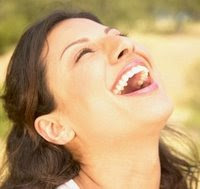What is Seborrhea?
The word "Seborrhea" means "too much oil." Seborrhea is also known as Seborrheic Dermatitis or common dandruff. Seborrheic Dermatitis is a very common inflammatory condition of the skin causing flaking of the skin. Seborrhea treatment is a must to a good hygiene and aesthetics!
What causes Seborrhea?
Dandruff may be caused by a form of a skin condition called eczema, which causes increased shedding of normal scalp skin cells, of course on the head and shoulders. Hormonal or seasonal changes may make dandruff worse.
What are the symptoms of Seborrhea?
In general, symptoms of seborrheic dermatitis include the following.
It is a skin condition characterized by loose, greasy or dry, white to yellowish scales, with or without associated reddened skin. It usually affects the scalp. This condition can appear at any time from infancy to old age, and can come and go more or less at random.
How is Seborrhea treated?
Seborrhea Treatment is directed at fighting the skin inflammation. This is done directly, by using cortisone based creams and lotions to reduce inflammation. It reduces the yeast that builds up on scaly areas, though dandruff is not a yeast infection.
Over-the-counter Seborrhea treatment products:
1. Shampoos: Some ingredients like tar, salicylic acid, zinc, selenium sulfide, ketoconazole in medicated shampoos help control dandruff of the scalp.
You can use any of these either all of the time or just once or twice a week, depending on how severe your symptoms are. If the problem quiets down or disappears, stop and use non-medicated shampoos. If one shampoo works for a while and runs out of its effectiveness, switch to another.
2. Creams: Two additional types of medication that help seborrhea are cortisone creams and anti-fungal creams.
Cortisone creams reduce inflammation. They are safe to use on the face; will often help in just a couple of days when applied twice daily. These products also are available as scalp lotions that are applied once a day, preferably on damp hair after shampooing. You can use scalp cortisone creams together with medicated shampoos.
Anti-fungal creams have been found to be effective, even though no one is sure whether these yeast-like organisms that are sometimes found in the skin of affected people really cause seborrhea. Anti-fungal creams also are applied once or twice a day.
As with shampoos, creams should be applied until the seborrhea subsides. When the seborrhea comes back, the creams should be used again.
Dermatologist’s Recommendations for seborrhea treatment:
Dermatologist recommend shampoos or cortisone creams that are stronger than those available over-the-counter, but yet are not too strong to use on the face. There are cortisone-based liquids, gels, and foams also that you can apply to the scalp that won't leave your hair easily.
They calm down your skin or scalp sensitivity, but they can't stop the seborrhea from coming back. Most people, however, only have to treat their condition from time to time when it becomes itchy or noticeable.
Dandruff on Eyelashes
Seborrhea of the eyelashes can be both annoying and hard to treat. Eye doctors like to recommend scrubbing the lashes with baby shampoo on a cotton swab. This method may be worth a try, but it often fails. Cortisone-based lotions should be used close to the eye only under medical supervision since continuous exposure of the eye to cortisone can lead to serious eye problems.
Seborrhea treatment for Infants:
Seborrhea can affect the skin on other parts of the body, such as the face and chest, and the creases of the arms, legs, and groin. Seborrheic dermatitis usually causes the skin to look a little greasy, and scaly or flaky.
How is it treated?
Home treatment often helps prevent and get rid of the symptoms of dandruff. Application of anti dandruff shampoo daily prevents a build up of dead skin cells on the scalp. Lather once and rinse and again repeat with soaking and rubbing the scalp help dislodge the cells. Take care not to damage the scalp. Good rinsing sheds all the loosened cells.
Control seborrhea!
Only the cleanliness of the hair and body with application of medicated shampoo, cream or gel in necessary frequencies with mild and vigorous rubbing of the scalp keeps the Seborrhea or dandruff under control.



